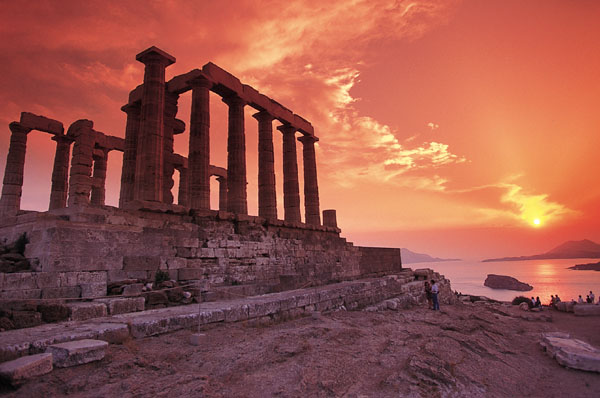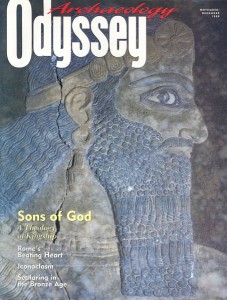Destinations: Sounion, Greece
Even Lord Byron, charmed by Poseidon’s Temple, left his mark.

Who cares if summertime Athens is crowded, noisy and full of honking cars? It has the Acropolis, with its proud temple to Athena, the Parthenon. And it’s just a short distance from the seaside splendor of Sounion.
Traveling to Sounion has taken on the nature of a pilgrimage to me. Only 40 miles from Athens, Sounion looks over the southernmost tip of Attica, to the Aegean Sea on one side and the Saronic Gulf on the other. Peaceful and beautiful, its summer sunsets are breathtaking, attracting hundreds of visitors each night. And then, of course, there are the magnificent ruins of the Temple of Poseidon, god of the sea, overlooking the water.
Sounion’s history stretches back a long way. Prehistoric tombs from the third millennium B.C. have been found nearby. In the Odyssey, written around the eighth century B.C., Homer mentions “holy Sounion, Athens’ headland” (Book III: 316). In the seventh century B.C., temples to Poseidon and Athena were constructed near each other on this high promontory.
It seems appropriate that the god of the sea, who in anger brought so many trials upon Odysseus, should be honored here at the point where two bodies of water merge, often turbulently. Sailors of old must have looked up to the Temple of Poseidon, atop its cliff, and prayed for safe passage around the cape.
Already a library member? Log in here.
Institution user? Log in with your IP address.

